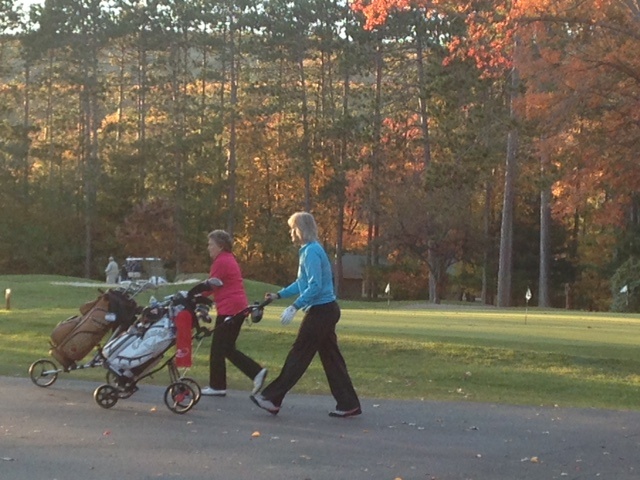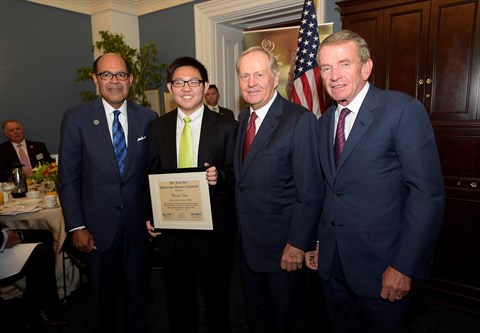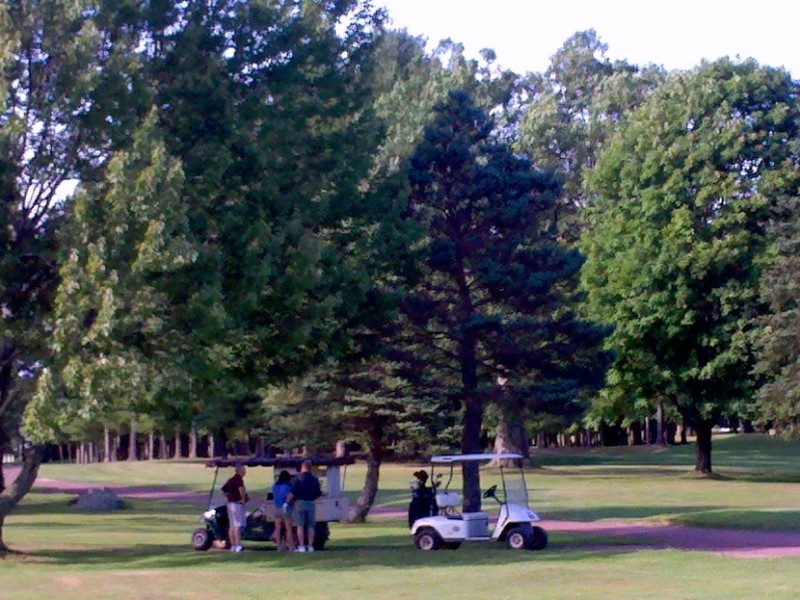Even seasoned golfers may be surprised to learn that they can greatly improve their game by refreshing some of the most basic golf fundamentals. This is particularly true with the grip, stance, posture and alignment. We chatted with golf pro, George Heslin, who encounters this often with golfers of all ages he teaches at Bowling Green Golf Club. He shared with us the importance of finding the best grip for your game and how to identify your appropriate grip pressure.
Finding the correct grip and pressure is an often-overlooked opportunity for improvement.
PRIMARY GOLF GRIPS
You are probably already familiar with the three primary golf grips. If I had to guess I would say you’re using the Vardon Grip. That’s what 90% of golfers use. According to George there are advantages and disadvantages to all three grips. He encourages you to try them all and see which works well for your golf game. Here is an overview of the three most popular grips to help you choose what is best for your experience, body type, and fitness level.
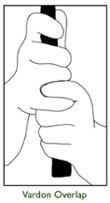
Vardon Overlap Grip
Most likely to be taught by golf instructors, this grip gets both hands to work together and is good for golfers who are looking to improve accuracy. This is the most popular grip among professional golfers and many consider it the preferred way to unify the hands. This grip is best for larger hands. Golfers with smaller hands may be disadvantaged, as the right hand can tend to be to far over or under the club.
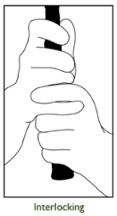
Interlocking Grip
The second most popular grip, the Interlocking grip is best for golfers with smaller hands or weak forearms and wrists. Also, if it’s good enough for the two greatest players in the world, Tiger Woods and Jack Nicklaus, it might just be good enough for you. Beginners often prefer this grip. The disadvantage is there’s a tendency to grip the club too much in the palm of the right hand.
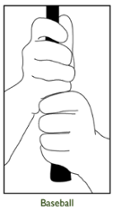 Baseball Grip
Baseball Grip
This grip is preferred least by instructors but it does have some advantages. Golfers who experience joint pain or have arthritis often benefit by using the Baseball Grip. The placement of additional fingers on the club allows golfers with weaker or shorter fingers to hold the club more securely. Because of this the grip can be a good alternative for children and women golfers. It’s great for creating leverage with your clubs but there is a danger of the hands slipping apart because the fingers are not linked in any way.
YOUR GRIP PRESSURE
Peter Morrice, senior editor of Golf Digest magazine says, “If you can get your grip pressure right, you make everything better with your swing.” We couldn’t agree more. Most amateurs consistently grip the club to tight. Gripping the club too tight can cause thin, weak shots that slice. A lighter grip enhances wrist hinge and also increase the amount of clubface rotation. This can be improved after you’ve found your proper grip. In this video, Peter shows you how to assess your current grip pressure and find your grip pressure sweet spot.
On a scale from 1 to 10, where 1 is the lightest and 10 is the strongest; your recommended grip pressure should be a 4 or 5. It is crucial to grip the club loosely without losing control, as any tension in your golf grip will translate to your arms and body resulting in a poor shot. Your hands and forearms should feel relaxed and tension free through your entire stroke.
Now you are gripping the club correctly and with the right amount of pressure you can build on that foundation. Look for future blog posts with tips from George on how to improve your golf stance, posture and alignment.
“There is no replacing solid fundamentals. If you can get to a good impact position and good follow through position ““ though there are a lot of things to focus on along the way – you will improve your game dramatically.” ““ George Heslin


